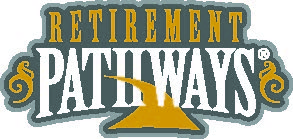SUBSCRIBE
Enter your Name and Email address to get
the newsletter delivered to your inbox.
Please include name of person that directed you to my online newsletter so I can thank them personally.


Dianne Williams Wildt, MBA
Certified Retirement Counselor®
Since 1983 in the financial services and investment industry
Retirement Pathways, Inc.
4500 Bowling Blvd., Suite 100
Louisville, KY 40207
Phone: 502-797-1258
Email: dianne@retirementpathways.com
Website: www.retirementpathways.com

As a small business owner, you recognize the need to recruit and retain talent. While good wages and health insurance typically are the most important benefits for workers, business owners shouldn’t discount the advantages of helping their employees save for the future.
1. SIMPLE (Savings Incentive Match Plans for Employees) IRA or 401(k) are limited to businesses with 100 or fewer employees. Employers make non-elective contributions of 2% of compensation to each eligible employee; or match individual contributions up to 3% of compensation. The plan is easy and inexpensive to set up and operate and has no filing requirement.
2. SEP (Simplified Employee Pension Plans) are available to any size business to set aside money in retirement accounts for the owner and employees. The business owner contributes up to 25% of compensation to a SEP IRA. Employee contributions are not allowed. The plan is easy to set up and operate and administrative costs are low. There are no filing requirements, and annual contribution amounts are flexible.
3. 401(k) Plans enable employees to contribute a portion of their wages to individual accounts. Salary deferrals are excluded from taxable income (with the exception of designated Roth deferrals, which are made after tax). Employers can contribute to employees’ accounts. The employer must file paperwork every year to show the plan is in compliance with IRS regulations.
Enter your Name and Email address to get
the newsletter delivered to your inbox.
Please include name of person that directed you to my online newsletter so I can thank them personally.
Enter your Name, Email Address and a short message. We'll respond to you as soon as possible.
Investment advisory services offered through American Capital Management, Inc., a State Registered Investment Advisor. Retirement Pathways, Inc. is independent of American Capital Management, Inc.
Retirement Pathways, Inc. and LTM Marketing Specialists LLC are unrelated companies. This publication was prepared for the publication’s provider by LTM Client Marketing, an unrelated third party. Articles are not written or produced by the named representative.
The information and opinions contained in this web site are obtained from sources believed to be reliable, but their accuracy cannot be guaranteed. The publishers assume no responsibility for errors and omissions or for any damages resulting from the use of the published information. This web site is published with the understanding that it does not render legal, accounting, financial, or other professional advice. Whole or partial reproduction of this web site is forbidden without the written permission of the publisher.